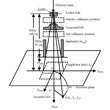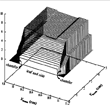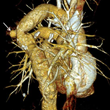
The email alerts service allows anyone who registers their email address to be notified via email when new content goes online.
Recommend this journal to your friend or library.
Manuscripts should be submitted online through our website or as an email attachment to the editorial office at editor.jri@nobleresearch.org
- Latest Articles
- Most Viewed
Latest Articles

Consideration for a revised Gaussian-pencil-beam-model reported for calculation of the in-water d
29 Jul 2024
The revised Gaussian pencil beam model is of practical use without using complicated correction factors ... More

Massive localized lymphedema of the thigh: Pseudosarcoma of the morbidly obese
12 Mar 2024
The final diagnosis was given based on patient’s demographics and the presence of lymphedema in other parts of the body.<... More

Further development of the preceding Gaussian-pencil-beam-model used for calculation of the in-wa
22 Jul 2023
The further revised Gaussian pencil beam model is of practical use without using complicated correction factors ... More

A revised Gaussian pencil beam model for calculation of the in-water dose caused by clinical elec
01 Dec 2022
The revised Gaussian pencil beam model is of practical use and has a bright prospect to give almost the same calculation result... More

Fast magnetic resonance arthrography of the labrum
02 Jul 2021
Fast MR arthrography using 3D VIBE sequences shows excellent concordance with standard T1-FS sequence for diagnosis of labral t... More

Analytic continuation and incomplete data tomography
08 Mar 2021
An alternative method to perform analytic continuation of an entire function, by using the Nyquist–Shannon sampling theor... More

Significance of small anteromedial or subpulmonic pneumothoraces on admission chest radiographs..
04 Jun 2018
The presence of small anteromedial or subpulmonic PTX is associated with a difficult transition to extra-uterine life which is ... More

Imaging Sinonasal disease with MRI: Providing insight over and above CT
07 May 2018
Applications and value of magnetic resonance imaging (MRI) in the evaluation of sinonasal disease. There are several clinical s... More

Usefulness of a balloon-expandable, covered stent for the transjugular intrahepatic portosystemic
02 Jan 2018
The covered, balloon-expandable stent could be placed accurately and allowed creation of adapted shunts with smaller diameters ... More

Point of care ultrasound in cardiac arrest: A case report of PE in PEA arrest
03 Apr 2017
Given this finding the patient was administered tPA, resulting in return of spontaneous circulation and eventual hospital disch... More

10-MV X-ray dose calculation in water for MLC and wedge fields using a convolution method with X-
14 Mar 2017
Convolution method can achieve accurate dose calculations even under MLC and/or wedge filtration. ... More

The hydrocele of canal of Nuck: Case report and review of the literature
04 Feb 2017
Painless inguinal swelling that may lead to investigation by imaging, mainly ultrasound, CT or MRI. ... More
Most Viewed

Adopted Korean woman with symptoms of cystitis – Delayed diagnosis of tuberculosis leading to disseminated disease
04 Jan 2017
We report a rare case of miliary tub... More

A representative study of pediatric panoramic and cephalometric radiation exposure to organs of the head and neck
02 Dec 2016
The purpose of this study was to mea... More

MRI system scoring for differentiation of malignant versus benign stricture of the common bile duct
03 Nov 2016
The purpose of this study was to eva... More

The value of radiometry in sex assessment of bone fragments: A study on the radius in a modern Greek population
05 Oct 2016
Objectives: This paper highli... More

Third degree skin burns caused by a MRI conditional electrocardiographic monitoring system
05 Oct 2016
Two unusual cases of third degree sk... More

Penetrating aortic ulcer manifesting as atypical chest pain
03 Sep 2016
This is a case report of a penetrati... More

Fetal intracranial neoplasm–not always a teratoma!
04 Aug 2016
Although congenital intracranial tum... More

Clinical evaluation of near-infrared light transillumination (NIRT) as an interproximal caries detection tool in a large sample of patients in a private practice
05 Jul 2016
Background: A study has been ... More

CT-guided puncture for direct MR-arthrography of the shoulder: Description of possible techniques
05 Jul 2016
The following report describes the p... More

The forgotten lymph nodes: Review of the superficial head and neck lymphatic system
05 Jul 2016
In patients with head and neck malig... More
Aims And Scope
Journal of Radiology and Imaging (JRI) is an international refereed journal, which publishes high-quality original articles reporting new information on related to all aspects of radiology and imaging. The journal encourages submission of articles including, but not limited to, projection radiography, fluoroscopy, teleradiology, optical imaging, digital subtraction angiography, intravital microscopy, roentgenology, radiation effects, imaging instrumentation, diagnostic and laser therapeutic methods, radiopharmacology, radionuclide imaging, gastrointestinal imaging, genitourinary imaging, cardiopulmonary imaging, musculoskeletal imaging, women's imaging, paediatric imaging, neuroradiology/head and neck imaging, nuclear medicine and molecular imaging, ultrasound, computed tomography, nuclear medicine, positron emission tomography, and magnetic resonance imaging.

Original research: primary research from any area of Radiology and Imaging
Case reports: reports of clinical cases that can be educational, describe a diagnostic or therapeutic dilemma, suggest an association, or present an important adverse reaction.
Editorial: to introduce and comment on major advances and developments in the field.
Methodology: present a new experimental method, test or procedure. The method described may either be completely new, or may offer a better version of an existing method. The article must describe a demonstrable advance on what is currently available. The method needs to have been well tested ideally, but not necessarily, used in a way that proves its value.
News and commentary: short, focused and opinionated articles on any subject with in the journal’s scope. These articles are usually related to a contemporary issue, such as recent research findings, and are often written by opinion of leaders invited by the editorial board. Editorial board members and section editors may write such articles to highlight hot or emerging areas of research within a given field.
Rapid communications: devoted to the publication of short papers presenting highly original and significant material.
Review: to review systematically progress and unresolved problems in the field and make suggestions for future work. Comprehensive, authoritative, descriptions of any subject within the scope of Radiology and Imaging journal.
Short reports: brief reports of data from original research.
Letters to the Editor: to discuss and make reply to the contributions published in JRI, or to introduce and comment on a controversial issue of general interest.
All articles of JRI are posted online immediately as they are ready for publication. All articles will be assigned a DOI number (Digital Object Identifier) where they become searchable and citeable without delay.
- JRI offers scientists the opportunity to publish their research rapidly in an open access medium that is freely available online to researchers worldwide.
- Electronic submission of manuscripts.
- Immediate publication tentatively within a month/two months of Initial submission.
- Efficient and objective peer review with a streamlined electronic production workflow.
- No barriers, which helps your research reach the entire scientific community worldwide.
- Our professional staff adds further value to your paper through the copy-editing process, which minimize stylistic errors and improves readability.
- Our professional staff continuously working to improve the search engine rankings for NobleResearch group journals.
- Our linking program extends too many abstracting and indexing databases, library sites, and includes participation in CrossRefTM.
Peer-review is commonly accepted as an essential part of scientific publication. We appreciate the time that referees devote to assessing the manuscripts we send them, which helps to ensure that NobleResearch journals publish only material of the highest quality. Peer reviewers are asked to give their opinion on a number of issues pertinent to the scientific and formal aspects of a paper, and to judge the papers on grounds of originality and urgency. All relevant information will be forwarded to the author(s). There are several types of decision possible for each article.
- Accept manuscript without revision
- Accept after minor or major revision
- Submit elsewhere, if the manuscript is better suited for another journal in our group
- Reject manuscript, if the manuscript is substandard
In addition, papers may be rejected directly by the Chief Editor if judged to be out of scope or if scientifically or formally sub-standard. When asking for revisions, reviewers have two possible goals: to ask authors to tighten their arguments based on existing data, or to identify areas where more data are needed. Even formal revision may be required if the language or formalities is sub-standard. To facilitate rapid publication, authors are given a maximum of two months for revision. After two months, revised manuscripts will be considered as new submissions.
The review process is strictly confidential and should be treated as such by reviewers. Because the author may have chosen to exclude some people from this process, no one not directly involved with the manuscript, including colleagues or other experts in the field, should be consulted by the reviewer unless such consultations have first been discussed with the professional editor.
NobleResearch believes that an efficient editorial process that results in timely publication provides a valuable service both to authors and to the scientific community at large. We therefore request that reviewers respond promptly, usually within fourteen (14) days of receipt of a manuscript. If reviewers need more time, we request that they contact us promptly so that we can keep the authors informed and, if necessary, assign alternative reviewers.
Authors may and should take advantage of the web-based nature of the publication by submitting supplemental files that include animations, software demonstrations and innovative graphics. Supplemental files will be evaluated with the manuscript as part of the peer-review process. They should not exceed 20 megabytes in size. We accept the following file formats for supplemental files: TIF (tif), JPEG (jpg), GIF (gif), Animated GIF (gif), PostScript (ps), Encapsulated PostScript (eps), Adobe Photoshop (psd), AdobePDF (pdf), Audio (au), Audio (mp3), Audio (wav), MPEG (mpg), Quicktime (avi), Quicktime (mov).
You keep the copyright of your article. You are free to print out copies of your article, email it to your colleagues and/or post it on the web. Your colleagues can use and disseminate your work without restriction for educational and scientific purposes.
Journal of Radiology and Imaging offers a wide range of advertising opportunities to promote your product or service. NobleResearch group reserves the right to reject any advertisement not considered suitable for publication.
For more information please contact:
Marketing Director
Email: marketing@nobleresearch.org



